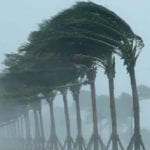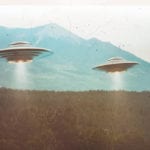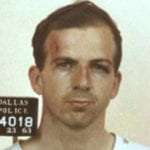 Humans
Humans  Humans
Humans  Animals
Animals 10 Species That Refused to Go Extinct
 Weird Stuff
Weird Stuff 10 Weird Things People Used to Do at New Year’s
 Our World
Our World 10 Archaeological Discoveries of 2025 That Refined History
 Weird Stuff
Weird Stuff 10 Fascinating Facts You Might Not Know About Snow
 Miscellaneous
Miscellaneous Top 10 Things Crypto Was Supposed to Change & What Actually Did
 History
History 10 Huge Historical Events That Happened on Christmas Eve
 Music
Music 10 Surprising Origin Stories of Your Favorite Holiday Songs
 History
History 10 Less Than Jolly Events That Occurred on December 25
 Weird Stuff
Weird Stuff 10 Funny Ways That Researchers Overthink Christmas
 Humans
Humans 10 Unsung Figures Behind Some of History’s Most Famous Journeys
 Animals
Animals 10 Species That Refused to Go Extinct
 Weird Stuff
Weird Stuff 10 Weird Things People Used to Do at New Year’s
Who's Behind Listverse?

Jamie Frater
Head Editor
Jamie founded Listverse due to an insatiable desire to share fascinating, obscure, and bizarre facts. He has been a guest speaker on numerous national radio and television stations and is a five time published author.
More About Us Our World
Our World 10 Archaeological Discoveries of 2025 That Refined History
 Weird Stuff
Weird Stuff 10 Fascinating Facts You Might Not Know About Snow
 Miscellaneous
Miscellaneous Top 10 Things Crypto Was Supposed to Change & What Actually Did
 History
History 10 Huge Historical Events That Happened on Christmas Eve
 Music
Music 10 Surprising Origin Stories of Your Favorite Holiday Songs
 History
History 10 Less Than Jolly Events That Occurred on December 25
 Weird Stuff
Weird Stuff 10 Funny Ways That Researchers Overthink Christmas
10 UFOs That Allegedly Left Physical Evidence Behind
Reports of “trace cases,” where UFOs leave their fingerprints behind, are steadily growing. They can be easily dismissed as lies from attention-seeking weirdos, but when they come from professionals such as pilots, policemen, soldiers, and scientists, it makes you wonder. These are not the career fields that encourage employees to swing on the extraterrestrial vine; they stand to lose a lot by reporting or investigating a UFO. (Of course, they can also stand to gain a fair amount due to the publicity.) This doesn’t mean that civilian sightings are less important. Trace cases, like any other good mystery, cannot be proven to everybody’s satisfaction, but they remain eternally fascinating to paranormal sleuths, whether armchair or professional.
10Cruiser Bruiser
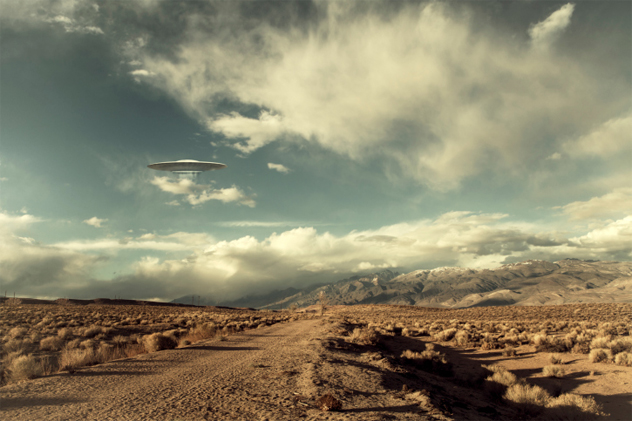
A moody UFO had no respect for the law when it was approached by a deputy sheriff in 1979. While on patrol outside the small community of Stephen, Minnesota, Val Johnson encountered something that would give him and his cruiser the UFO version of weaseling out of a ticket. Around 2:00 AM, the deputy noticed a bright object hovering above the road and decided to investigate a little closer. The UFO suddenly rocketed straight at his patrol car, killing the engine. The last thing Johnson remembered was light all around him and the sound of glass shattering. When he woke up, the strange object was gone and he was blind and bruised but able to radio for help.
Fellow policemen soon arrived and found Johnson’s 1977 Ford worse off than he was. The windshield was splintered and smashed, there were dents in the hood, and both a headlight and the roof beacon were wrecked. The car’s two radio antennae were bent, respectively at 45- and 90-degree angles. Johnson also stated that the car’s clock and his wristwatch both stopped for 14 minutes and that he had blacked out for 39 minutes. Time in the Val Johnson story is the only suspicious factor in an otherwise compelling UFO trace case. He never clarified how he knew that he had been unconscious for exactly 39 minutes, nor did he explain what had made him aware that the two clocks had lost time and how he measured the time lost as 14 minutes.
The medical evidence was a little more solid. The doctor who attended to Johnson described his sight injury as similar to welder burns caused by extreme exposure to UV light. Thankfully, he eventually recovered his vision, and the patrol car—original damage intact—now stands in a museum in the Minnesota town of Warren.
9The Killer Ice Cream Cone
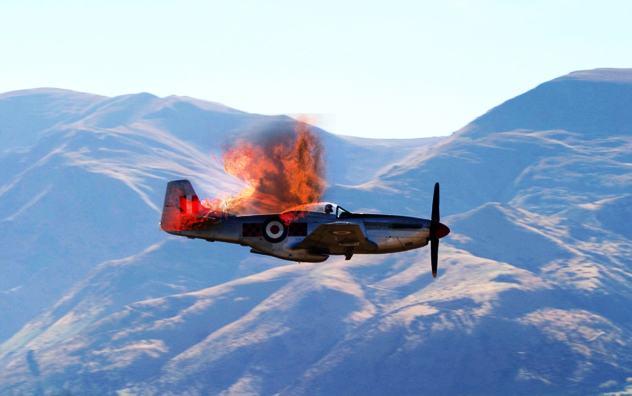
On January 7, 1948, Captain Thomas Mantell was leading a squadron of four F-51 Mustangs to an airfield in northern Kentucky, unaware that a giant cone-shaped object in the air was already freaking out civilians, military, and highway patrols. The coned craft gave witnesses the impression of being reflective and at least 90 meters (300 ft) in diameter. Since they were incidentally in the right airspace, a tower operator requested that Mantell investigate. The Mustangs climbed in altitude to reach their target, but at 6,800 meters (22,500 ft), low fuel or oxygen forced all the other pilots to return to base.
Alone, Mantell continued ascending and radioed his last message, saying that he saw the object directly ahead and that he was going to give the chase another 10 minutes. But shortly afterward, a horrified local watched Mantell’s plane circle three times before it dove out of the sky and exploded about halfway to the ground. The extreme fringe believed that Mantell had been shot down by an extraterrestrial force. The director of Project Grudge, Edward J. Ruppelt, blamed the incident on the Skyhook balloon. The US Navy was secretly developing the Skyhook, a massive ice cream cone–shaped balloon made of reflective aluminum. None of the witnesses had heard about or seen Skyhook before.
According to Ruppelt’s sources, several of them were launched about 240 kilometers (150 mi) away on the same day as the Mantell UFO. While Ruppelt couldn’t locate the flight records that would’ve proved his theory, he was satisfied that the wind patterns for January 7 would’ve taken a Skyhook into the locations of the reported sightings.
8The Rendlesham Compensation

On December 27, 1980, John Burroughs met the most eye-popping sight of his life. He was one of the first airmen on the scene at the alleged landing site in Rendlesham Forest, a touchdown that would later become Britain’s flagship UFO mystery. During the encounter, some of the men were said to have touched the conical craft, but the group eventually fled the forest when some of them started falling into a trance-like state and had to be physically dragged away from the object.
Burroughs, an American, believed that his proximity to the craft that night had exposed him to something deadly, possibly radiation, which later caused severe heart problems and other health complaints. For years, he fought for disability compensation from the Department of Veterans Affairs, bravely sticking to his story that a spaceship had made him sick. To build his case, Burroughs needed the right paperwork, but the VA could only trace his service records back to 1982, two years after the incident. He had to go through two Arizona senators’ offices before he could get the discharge papers which proved he’d been stationed near Rendlesham around the time of the incident.
He also produced Project Condign as evidence—a declassified British study that sidelined UFOs as a little-understood form of weather “plasma” called “unidentified aerial phenomena” (UAP). Even Condign concluded that it was conceivable that the Rendlesham witnesses had been exposed to radiation, albeit from UAP. What helped sway the VA’s final decision in Burrough’s favor were his service medical records, which could be viewed by the agency but not Burroughs. Based on these documents and others, Burroughs was finally awarded full disability and some acknowledgement that his bad health had really been caused by a close encounter.
7The Kecksburg Acorn

A mass-witness sighting allegedly took place on December 9, 1965, and ended when something plowed into the Earth at Kecksburg, Pennsylvania. A meteor-like object blazed through Ontario, Canada, and six US states, dropping debris and leaving sonic booms and field fires in its wake. Thousands saw it in the sky and later read in the newspapers that it was just that: a meteor. But there are those who believe it fell in the woods at Kecksburg and that it was a car-sized object shaped like an acorn. Unearthly symbols were written on it, something close to Egyptian hieroglyphs.
While witnesses insist it attracted a heavy military presence, the US Army said they found nothing. Yet years later, amid pressure to release the truth about the Kecksburg incident, NASA admitted that they’d examined debris from the site and found that it had been a Russian satellite. When ordered by a judge to produce the documentation of their findings, NASA seemed to have misplaced them. The only Soviet candidate that remotely fit was Kosmos 96, an acorn-shaped satellite which wasn’t nearly as big as the Kecksburg object. Even NASA’s chief scientist for orbital debris, Nicholas L. Johnson, stated that Kosmos had nothing to do with the fireball sightings or the crash, which may still turn out to be two separate events.
US Space Command also reported that Kosmos crashed in Canada 13 hours before the sightings started. In 2003, scientists discovered topless trees leading toward the spot where the object was reportedly found. The damage was dated to the year of the crash. While one scientist felt that ice was probably responsible, it’s plausible that an incoming object could’ve sheared the trees as it crashed through them.
6The Water Thief
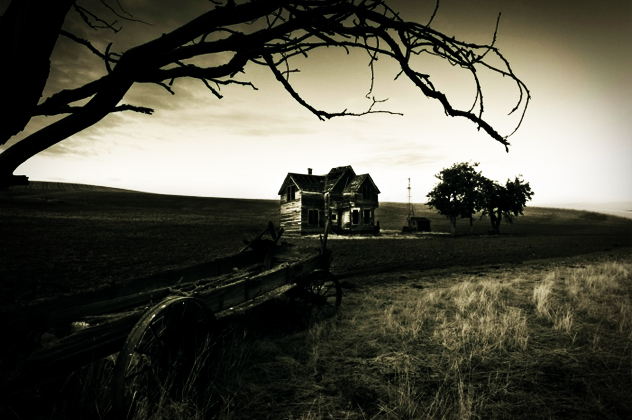
During the same year as the Rendlesham Forest incident, an Australian farm worker named George Blackwell had a run-in with a thirsty UFO. He was roused from his sleep at about 1:00 AM by frantic farm animals bellowing and galloping and an unearthly whistling sound. Checking to see what was going on, the 54-year-old was astonished to see cattle trying to escape a double-domed object hovering about 3 meters (10 ft) above the ground. The craft appeared to be checking a shed, a hedge, a silo, and finally a water tank, whistling loudly all the way.
The open water tank seemed to hold the object’s attention for a while before it finally settled on the ground. Blackwell approached the object on his motorbike but was forced to stop 15 meters (50 ft) away due to the earsplitting whistling. He estimated its height to be about 4.5 meters (15 ft) and the diameter to be 8 meters (26 ft). The surface was dotted with orange and blue lights that might’ve been round windows. But the weirdest feature was a moving black tube which inflated to a size bigger than the UFO itself. When the craft took off, apparently with the 38,000 liters (10,000 gal) of water later discovered missing from the tank, the creepy tube shrank back into the middle of the object’s base.
For a long time, the cattle avoided the black ring marking the landing site and, for more than a week, the headache-plagued Blackwell suffered from diarrhea and couldn’t hold much food down. For days after the sighting, his wristwatch would only tick when he wasn’t wearing it.
5The Lavender Crater

In 1965, a French farmer heard a noise which he took to be a helicopter landing on his property and decided to investigate. Maurice Masse, 41, raised lavender just outside the town of Valensole in the south of France. Going out to his field, he encountered a dull oval shape about 3.5 meters (11 ft) wide and 2.5 meters (8 ft) high. Resting on its belly with six legs, it reminded him of a spider. There was also a pair of child-sized entities scrutinizing the lavender.
When Masse tried to get closer, one of the creatures paralyzed him by pointing a rod at him. They resembled the classic greys except that they were white, neckless, and had elfish ears. They boarded the craft and, for 15 minutes after their departure, Masse was unable to move. The weather had been dry for some time, but the landing site was a sopping wet crater. About a day later, the wetness was gone and the ground turned hard as concrete while the rest of the field’s earth remained crumbly. For months afterward, Masse suffered from a strange sleeping disorder where he slept 15 hours at a stretch, which wasn’t normal for him.
French government agencies and police gathered interesting data from the site. The landing area showed highly elevated levels of calcium when compared to the rest of the field. Dents and a 3-meter-wide (10 ft) spherical space showed that something had been there. The lavender plants around the crater were sick and dying, and for 10 years nothing would grow in that spot.
4The Ubatuba Case
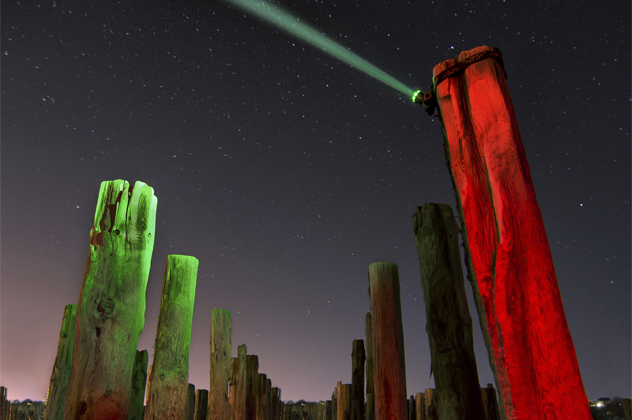
While the only danger one UFO in Brazil presented was to itself—it exploded like a firecracker—it’s possibly one of the most noteworthy trace cases. On September 14, 1957, columnist Ibrahim Sued received a letter from a fan who had a fantastic story and the proof to back it up. The envelope contained three white metal pieces allegedly from a disk that had disintegrated above a beach in Ubatuba, Sao Paulo. The fan, who claimed to have witnessed this event, was never identified.
The testing done on one of the pieces destroyed it but gave interesting findings. It was revealed to be magnesium with above average density, and when the study stated that the magnesium was purer than that which human technology could produce, the fragments became an overnight sensation in UFO circles. The University of Colorado tested one of the two remaining pieces and found that it wasn’t as pure, but since the Brazil sample no longer existed, its purity couldn’t be verified. However, the Colorado study did concede that their piece was packed with an abnormal amount of strontium, something not found in normal magnesium. The metal had also been strengthened during its manufacturing with a process called directional crystallization, a technique unknown in 1957 when the fragments were mailed to the columnist.
3Fire On The Highway

On September 16, 1965, two South African police constables were on night patrol. They were driving on the Pretoria-Bronkhorstspruit highway, their evening shift so far uneventful, but then midnight changed everything. It’s unclear who first saw the contraption sitting on the highway, but it was a sight that neither would ever forget. It certainly wasn’t terribly frightening—the craft was a simple, copper-colored disk—but what struck Constables John Lockem and Koos De Klerk was what happened when the UFO sped off seconds after they sighted it.
Fleeing, the craft shot away in a rush of speed and heat, spewing an overload of fire that bounced 1 meter (3 ft) off the asphalt. The highway actually caught fire. An area of 1.8 meters (6 ft) in diameter burned so intensely that gravel separated from the tar. During the official investigation that followed, it was found that a section of the road had collapsed, most likely under the weight of the large UFO. Samples taken from the carnage were sent away for analysis, but the results were never made public.
2The Scoutmaster Attack
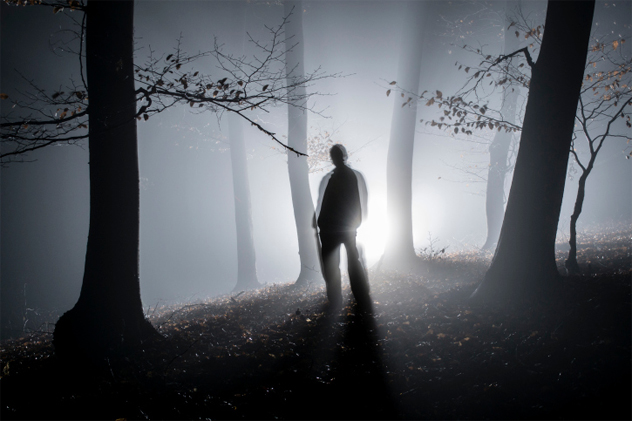
A case occurred on August 19, 1952, that stumped the investigators of Project Blue Book. That night, Deputy Sheriff Mott N. Partin responded to a call that three terrified children had shown up at the caller’s farmhouse. They were scouts claiming that their scoutmaster, “Sonny” Desvergers, had collapsed while investigating strange lights on a rural road in Palm Beach. Going back to the scene, the cops didn’t have to search long. Desvergers emerged from the trees in a traumatized state which the 19-year police force veteran Partin felt was genuine.
The scoutmaster claimed that he’d been attacked by a UFO and had three tiny burn holes in his hat and singe marks on his arms. The case eventually landed on the desk of Blue Book investigator Edward J. Ruppelt. Investigations at the scene didn’t immediately find anything conclusive, and Ruppelt learned from the scouts that they never saw the original lights that had caught Desvergers’s attention. However, the boys did witness subsequent lights, including a red light that seemingly caused their scoutmaster to faint.
Desvergers’s story held despite Ruppelt’s attempts to trip him up, but Ruppelt smelled a publicity stunt for financial gain when Desvergers hired a press agent and made ridiculous claims to reporters. Then Desvergers’s history of lying, going AWOL, and car theft (which got him removed from the US Marines) caught up with him. Ruppelt was now weary of him, and his press agent abandoned him. Certain now that the sighting was a hoax, Ruppelt was at a loss to explain how the whole thing was staged. Nor could he or the FBI lab discover what had burned the scoutmaster’s cap or how some of the grass taken from the site had charred roots while their leaves were fine. Nothing prevents a compulsive liar from having a supernatural experience. Either Desvergers told the truth, somewhat embellished, or he managed to pull off a hoax that left one of the best investigators in the business without answers.
1The Maury Mystery
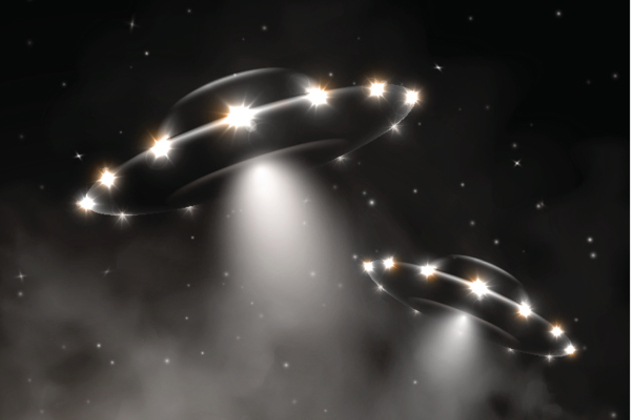
On June 21, 1947, Harold Dahl and his crew claimed that they’d survived a frightening encounter that damaged their boat, injured one of them, and killed their dog. Navigating around Maury Island, Dahl’s men noticed six doughnut-shaped objects above them. One was faltering badly. Before it flew away with the others, the UFO spewed a stream of shiny flakes (these caused the harm to the witnesses). The next day, Dahl was cornered by a Man in Black (MIB) who told him to mind his own business. But the story had already reached Kenneth Arnold, who himself had his historic sighting three days after the Maury incident. He met with Dahl, who handed over some of the debris but not the photos he’d snapped of the crafts.
Perhaps due to the local MIB and FBI threatening legal steps if Dahl didn’t drop the matter and admit it was a hoax, Dahl eventually did exactly that. Two Air Force officers, Captain Davidson and Lieutenant Brown, were going to take the debris to Fort Hamilton for analysis, but their B-25 went down shortly after takeoff. The military cordoned off 150 acres around the crash site but abandoned most of the wreckage after a week. Some speculated that they were done tinkering because they had found the extraterrestrial flakes.
Two days after the Air Force fatalities, another plane crashed, this time with Arnold on board. He barely survived. The Tecoma Times claimed that the B-25 was deliberately downed to prevent the fragments from reaching Fort Hamilton. Two weeks after publication, the journalist who wrote the article, Paul Lance, died from a cause that couldn’t be identified, despite a 36-hour autopsy. The case remains torn in two camps—those who believe Dahl faked the whole thing and those who feel that key truth seekers were silenced and that Dahl was frightened into saying it was a hoax.
